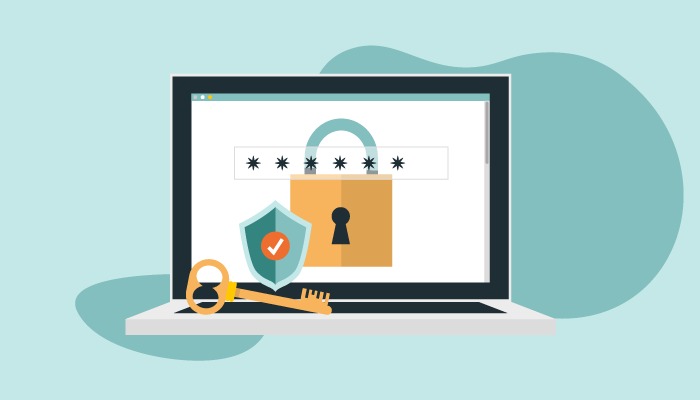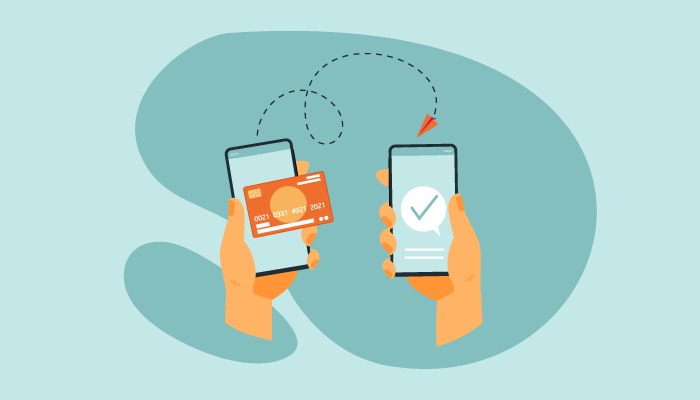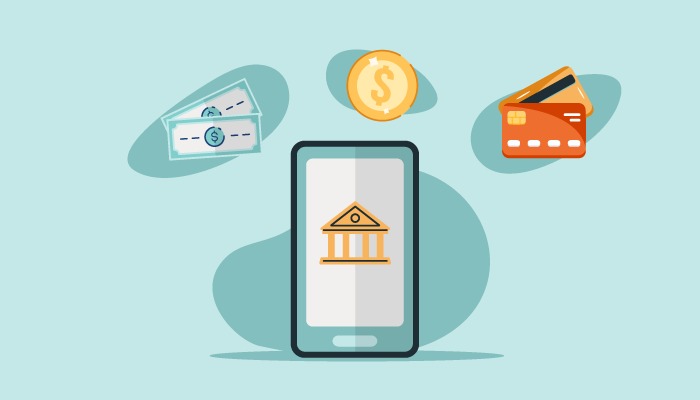
Staying Competitive in a Rapidly Evolving Market
“It is a rapidly evolving world and those who do not change with the winds eventually get left behind. The same goes for modern-day banks.”
With the fast pace of mobile banking transformation, the competition is becoming even more fierce. According to reports, mobile banking revenue is predicted to rise to $542.80 billion by 2026.
Therefore, to cut through this fierce competition, it is very important to stay updated with the current banking app trends.
“It is not the strongest of the species that survive, nor the most intelligent, but the one most responsive to change.”
Charles Darwin
Not just for standing out, keeping up with the current banking trends is also essential for meeting customer expectations, and enhancing efficiency and the overall user experience for the customers.
However, one of the major problems in mobile banking is that it often becomes difficult for the decision-makers to implement the right solution to get the right results.
Having a clear idea about the banking trends before implementing any of the solutions will help in enhancing cost-effectiveness, ease of integration, and safeguarding customer information in a better manner.
In this article, we will explore the things you should consider before implementing any trend. We will also dive into the latest trends that you should keep up with to stay competitive in this dynamic online banking industry.
So, let’s get started!
Things To Consider Before Following a Banking Trend
There is a lot to take into account before making the final decision to implement a banking app trend. Different banking apps might benefit from different solutions. One trend doesn’t fit all. That is why it is important to know what you should consider before jumping on a trend.
Cybersecurity
The safety of a customer’s financial and personal information is of utmost importance for any banking app. A bank that does not provide safety is not a bank. Banks must ensure that user’s data is protected while embracing a trend is crucial.

Compliance Measures
Another crucial consideration before adopting a banking app trend is ensuring it does not interfere with regulatory compliance. Not conforming to regulations like KYC and the IT Act will result in legal complications, reputational risks, and distrust among customers.
Seamless Integration
Ensuring that there is seamless integration of any new solution is key to providing an exceptional user experience to the customers. How to maintain smooth integration is also something that banks must look into before adopting a trend.
Cost Effectiveness
Before jumping on a trend, one important question banks must ask themselves is whether this new solution will be financially viable for them or not. It is essential to calculate the amount of money that the new solution will require to implement and maintain.
Now that we know the important factors to evaluate before embracing a new solution, let us dive into the latest banking app trends that will rule 2024.
Latest UX trends for Banking Apps in 2024
Voice Banking Feature
According to a survey conducted in 2016, around 39% of respondents wanted voice banking features in their banking apps. To meet customers’ demand for a seamless and convenient banking experience, many banks have integrated voice banking features into their apps.
Voice assistants like Alexa and Siri are already assisting users in conducting financial transactions through simple voice commands. The voice recognition feature not only enhances convenience but also adds an additional security element to the banking app, a key reason why customers love this feature.

The trend of going hands-free for payments is rapidly gaining popularity, and it is expected that this trend is not just a passing craze but a lasting shift in user behavior.
Your banking app can truly benefit by implementing the voice banking feature if it is backed with an impeccable UX design and solid front-end engineering. Because in the end, the success of a banking app depends on a seamless and enjoyable user experience.
Borrower-to-lender Transactions
Borrower-to-lender transactions or peer-to-peer lending is reshaping the modern financial landscape. It allows users to borrow or lend money directly to each other without involving a bank. According to reports the market size of peer-to-peer lending will rise to 804.2 billion USD by 2030
P2P lending is rapidly gaining popularity because it connects investors desiring higher returns than savings, with borrowers looking to access capital at lower rates than that offered by traditional lenders.
It is the future of decentralizing financial solutions.
Embracing this trend with banking apps will facilitate a major shift towards democratizing finance and providing community-driven financial solutions to modern-day banking customers.
However, there are various challenges that UX designers and front-end engineers need to overcome to successfully integrate P2P lending and provide a seamless user experience. Some of them include:
- Providing real-time updates on loan statuses
- Providing transparent information on Interest rates and terms
- Simplifying complex financial transactions
- Robust identity verification
- Strong encryption
Without an excellent, uncomplicated, and user-friendly interface, it is difficult to enjoy efficient results from implementing peer-to-peer lending.
App-Driven ATM Withdrawals
App-driven ATM withdrawal has revolutionized the concept of banking. Reports show that the global cardless ATM market share is set to rise to 5.16 billion USD by 2029. Withdrawing cash from ATMs has become easier than ever thanks to cardless ATM withdrawals.
All that a user needs to do is use the banking app and generate a code or use near-field communication technology (NFC).
This is one of the best features that a banking app can offer for those users who often forget their debit cards at home. What makes cardless ATM withdrawals even better is that they are more secure than ATM cards. There is no scope for the user’s account PIN to fall into the wrong hands.
Again, a strong UX design is of the utmost importance to support app-driven ATM withdrawals.
Big Data
Big data is another hot topic making waves in the banking market. While some people mistakenly perceive it as a threat to user security, the reality is quite the opposite. It is a new technology using which businesses can collect a large volume of structured or unstructured user information by monitoring user activity on their apps.
Big data is very popular in the sales and marketing sectors and the banking sector can also benefit from this revolutionary technology.
Big data in no way threatens the security of the users. Instead, it acts as a guard against any fraudulent activity that may harm data security. It helps the banks detect unusual behavior and take effective countermeasures.
This makes big data a valuable ally in maintaining a secure financial environment. When implemented with an exceptional UX design, big data can prove to be a valuable addition to your banking app.
Hassle-free EMI and Credit Management
Managing finances, especially debt is not an easy task for most people. People are constantly looking for ways to make this task a little bit easier and less confusing.
Modern-day banks have identified this problem as an opportunity to enhance their user experience as well as attract more business.
Several banks are paying strong attention to their UX designs to offer seamless debt management solutions such as debt consolidation options, flexible repayment plans, personalized budgeting tools, and financial counseling services.
It is safe to say that this innovation has made managing credit and EMIs easier than ever.
Gamification
This is 2024, an era where grabbing people’s attention for even a second is a luxury. Modern-day banks understand this therefore they have come up with an innovative way to hold the users’ attention by gamifying their banking apps. The gamification market is expected to reach a value of 30 billion USD by 2025.

A few ways in which banks implement gamification are by introducing interactive financial challenges, rewarding users for achieving certain milestones in their financial journey, and incorporating point systems or badges for completing specific tasks, etc. Needless to say, all this will be possible only if your banking app has an exceptional UX design.
Gamification has proved that managing finances can also be interesting and fun.
How f1studioz is Revolutionizing the Banking Sector with Great UX
We at f1Studioz are committed to crafting exceptional digital experiences for our BFSI partners. User-centricity and performance enhancement are at the core of our endeavors to provide transformative digital solutions for top-notch performance.
We stand proudly as the digital partners of industry leaders like Barclays, ICICI Bank, Kotak Mahindra Bank, OakNorth Bank, and a substantial number of distinguished brands. Our collaboration with these industry giants and their highly positive testimonials speak for our expertise in providing top-tier services.
From UX Design to front-end engineering, user-centric innovation to data-driven decision-making, we are here to cater to all your BFSI digital needs.
Bottom Line
Banking is evolving at lightning speed. Voice banking, P2P lending, app-driven ATM withdrawals, big data, debt management, and gamification are some of the latest facets of this evolution.
The strategic adoption of these trends will not only foster competitiveness but also drive the industry toward greater innovation and customer-centricity.

As the financial landscape reshapes, integrating these trends isn’t merely an option—it’s a necessity. Banks must not only adjust but also take the lead, harmonizing these cutting-edge trends to redefine the very essence of modern banking.







